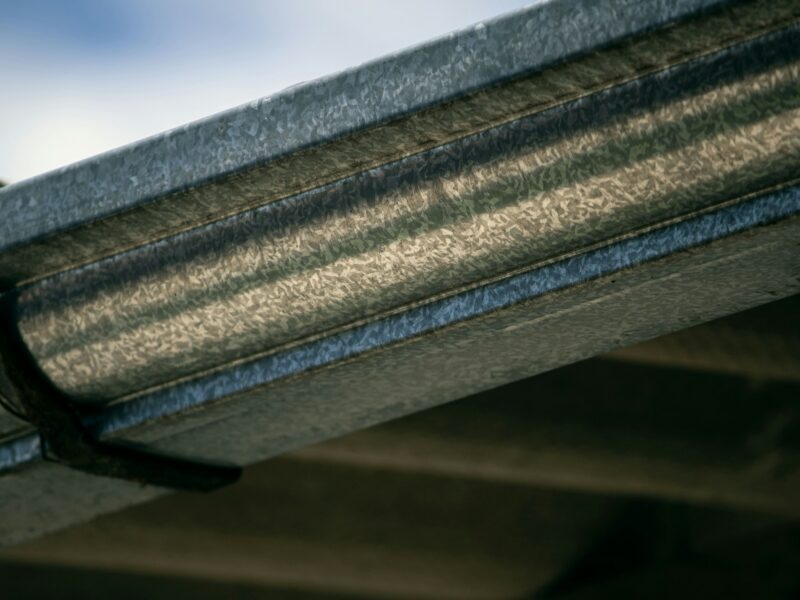If you’ve recently experienced a hailstorm, you know how unsettling it can be to see those icy pellets rain down on your property. And while hail can wreak havoc on various parts of your home, one of the most vulnerable areas is your roof. But fear not! In this guide, we’ll walk you through the essential steps to take after hail damage strikes your roof, helping you navigate the hail damage roof repair process with ease and confidence.
Contents
Assessing the Damage
The first order of business after a hailstorm is to assess the extent of the damage to your roof. Here’s how you can do it:
1. Safety First
Before you step outside to inspect your roof, ensure your safety. Wait for the storm to pass completely, and watch out for any slippery surfaces.
2. Visual Inspection
Grab a pair of binoculars and scan your roof from the ground. Look for signs of damage such as dented or missing shingles, cracked tiles, or granules collecting in your gutters.
3. Interior Check
Head indoors and inspect your ceilings for water stains or signs of leaks. These could indicate damage to your roof that may not be immediately visible from the outside.
Documenting the Damage
Once you’ve assessed the damage, it’s crucial to document it thoroughly for insurance purposes. Here’s what you should do:
1. Take Photos
Capture clear photos of the damage from multiple angles. Be sure to include close-up shots of any affected areas.
2. Keep Records
Maintain detailed records of the date and time of the hailstorm, as well as any relevant weather reports. This information will support your insurance claim.
Filing an Insurance Claim
Now that you’ve documented the damage, it’s time to file a claim with your insurance company. Here’s how to navigate the process:
1. Contact Your Insurer
Reach out to your insurance provider as soon as possible to report the damage. Be prepared to provide them with the documentation you’ve gathered.
2. Schedule an Inspection
Your insurer will likely send an adjuster to assess the damage in person. Be present during the inspection to ensure that all areas of concern are addressed.
3. Review Your Policy
Take the time to review your insurance policy and understand your coverage limits and deductibles. This will help you manage your expectations during the claims process.
Temporary Repairs
While waiting for your insurance claim to be processed, it’s essential to address any immediate issues to prevent further damage. Consider the following temporary repairs:
- Covering Leaks: Use tarps or plastic sheeting to cover any areas where water is seeping into your home.
- Clearing Debris: Remove any debris or fallen branches from your roof to prevent additional damage.
- Sealing Cracks: Use roofing cement to seal cracks or gaps in your shingles or tiles.
Hiring a Contractor
Once your insurance claim is approved, it’s time to hire a reputable contractor to repair or replace your roof. Here are some tips for finding the right professional for the job:
1. Research Local Contractors
Take the time to research local roofing contractors and read reviews from past customers. Look for companies with a solid reputation and a track record of quality workmanship.
2. Get Multiple Quotes
Request quotes from several contractors and compare their pricing, services, and warranties. Don’t automatically choose the lowest bidder; instead, opt for the contractor who offers the best value for your money.
3. Check Credentials
Verify that your chosen contractor is licensed, insured, and bonded. Additionally, inquire about their experience with hail damage repairs and ask for references from satisfied customers.
The Importance of Regular Roof Maintenance
While dealing with hail damage can be a wake-up call for many homeowners, it’s also a reminder of the importance of regular roof maintenance. Here’s why staying on top of your roof’s condition is essential:
1. Preventive Care
Regular inspections and maintenance can help identify minor issues before they escalate into major problems. By addressing issues promptly, you can avoid costly repairs down the line.
2. Prolonged Lifespan
A well-maintained roof is more likely to withstand the elements and last longer than one that’s neglected. Investing in routine maintenance can extend the lifespan of your roof and protect your home for years to come.
3. Enhanced Property Value
A sturdy, well-maintained roof adds value to your home and enhances its curb appeal. Whether you’re planning to sell in the future or simply want to enjoy a beautiful exterior, keeping your roof in top condition is key.
4. Peace of Mind
Knowing that your roof is in good shape provides peace of mind, especially during storm season. Instead of worrying about potential leaks or damage, you can rest easy knowing that your home is well-protected.
Final Thoughts
Experiencing hail damage to your roof can be a stressful ordeal, but by taking the right steps, you can minimize the impact and restore your home to its former glory. Remember to prioritize safety, document the damage thoroughly, and work closely with your insurance company and chosen contractor throughout the repair process. With patience and diligence, you’ll weather the storm and emerge with a sturdy, secure roof overhead. Stay safe out there, and happy homeowning!
So there you have it – a comprehensive guide to navigating the aftermath of hail damage to your roof. We hope you found this information helpful and that it gives you the confidence to tackle any challenges that come your way.



